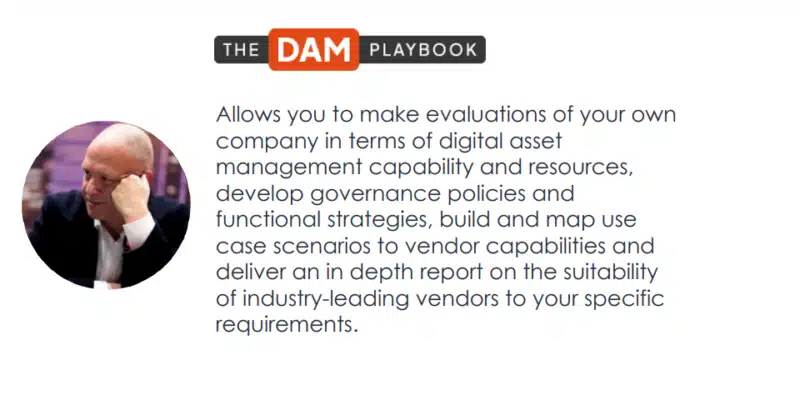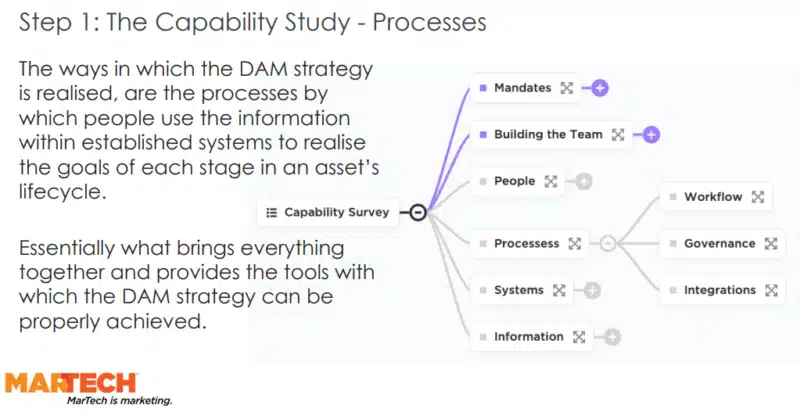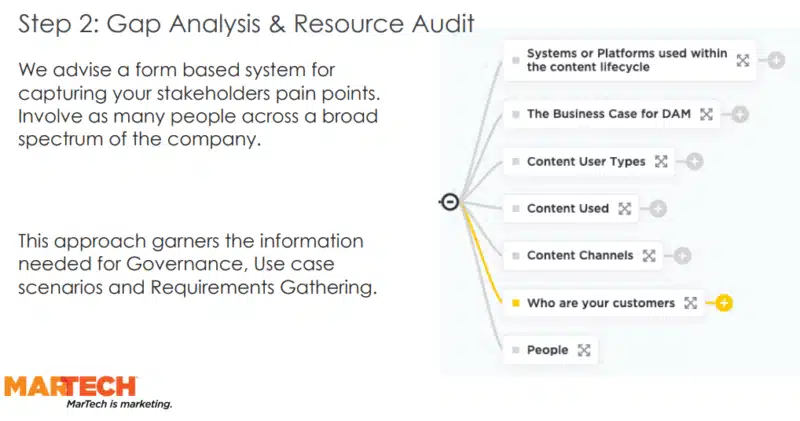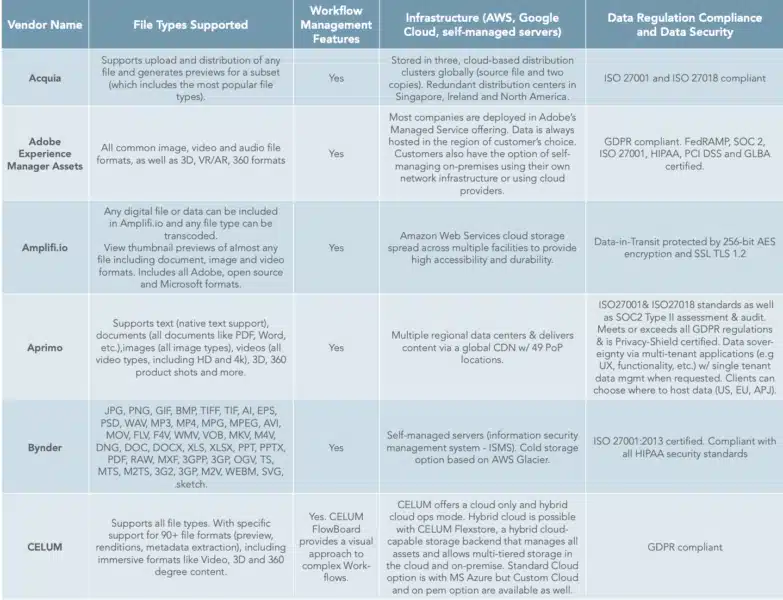How brands can succeed in digital asset management
Assessing your brand's relationship with digital technologies is foundational to campaign success.
“I want to introduce you to the DAM playbook that looks at digital asset management,” said Mark Davey, founder of IQ Equity, in his presentation at our MarTech conference. “The reason so many DAM systems and strategies fail is that their complexities aren’t understood fully.”
Davey and his team put together this resource to help marketers organize their digital assets. Its emphasis on content, teams, and workflow gives professionals a helpful roadmap to using their campaign content data effectively.

“The brilliance of content with data assigned to it is that we get to the type of things that you need to consider when you’re going for an end-to-end strategy,” he said. “People touch content, and content with metadata means you’ll be able to analyze it and get insights.”
Davey went through some tactics from the playbook marketers can use to better understand DAM’s capabilities. Here are three steps he suggests marketers take to begin organizing their digital assets for campaign success.
Take a capability assessment
“We see a lot of companies going to the vendors and back-engineering their strategy, which is a mistake for everybody,” said Davey. “The capability study is based on five dimensions: ad hoc, incipient, formative, operational, and optimal. What you want to do is look at people, processes, systems, and information.”
This assessment can help marketers establish a baseline for their current operations. It can map out how people and processes interact with your digital assets and how they work together.

The assessment encourages organizations to ask questions, such as “Do you have the technical expertise within the business?” and “How do you manage rights, roles and permissions, and governance around that?” These inquiries can also help your brand garner the information needed to optimize campaign management and generate use case scenarios.
Perform a gap analysis and resource audit
Once brands have a better idea of their current DAM capabilities, Davey recommends they perform a gap analysis, followed by a complete resource audit.

“In some silos, where they’re only using a few bits of content, it might be easy, whereas in other parts of the business there might be a lot of delays where you can’t find the content,” Davey said. “In this scenario, we don’t have a central repository. Our digital asset management system doesn’t have the data or the taxonomy or the controlled vocabularies around it, and therefore people are struggling to find that content.”
He added, “This gives the business a case for the stakeholders’ group, which is where you want to build a team. You want it to be task-oriented.”

Explore DAM solutions from vendors like Adobe, Bynder, Cloudinary and more in the full MarTech Intelligence Report on digital asset management platforms.
Gather digital requirements
After gaining a better understanding of your brand’s digital capabilities and resource gaps, it’s time to start gathering assets to meet these requirements. They could any of the following: data, security, department groups, usage rights, and roles.
“Each one of these [requirements] is a task-oriented question and answer deep dive,” Davey said. “Questions like, ‘What is the look and feel?’ or ‘What kind of access to internal and external requirements do we need to have?’”
“Within that framework, you start to identify core skill sets where you can start to build the next phase, which we call requirements gathering,” he added.

The key to gaining insights from this gathering process is understanding your customer’s metadata. This data provides marketers with deep insights into users on their digital platforms and helps serve up better experiences — because putting together these requirements is meant to patch up holes in your digital experiences.
“Understand what metadata within DAM is specific to the users,” he said. “Metadata drives the experience and the analysis that you can harness within a DAM system.”
Adopting a DAM system to address each of these tasks can help brands unite their digital assets. But the platform they choose isn’t what makes or breaks a campaign — it’s how organizations structured themselves around it.
“There is an abundance of capable DAM systems, but a scarcity of companies able to reap the benefits of a capable DAM,” he said.” I have overseen the negotiations of over 600 DAMs, many of them Fortune 500 companies, and I can say that only a small handful are using DAM to capacity.”
He added, “The myth remains strong that new technology is the solution to the problem, while the problem rests instead with the disconnected actions flowing from the company’s vision.”
Watch the rest of this presentation at the MarTech conference here (free registration required).
Dig deeper: Mark Davey’s series for MarTech on DAM
Digital asset management platforms: A snapshot
What is it? Anyone who’s struggled to find a file on their computer or shared drive understands the pain of tracking down content. And when you consider the sheer amount of files you need to sort through when many versions are created to resonate with specific audiences, these tasks can feel overwhelming. Digital asset management platforms simplify these tasks by bringing all of your marketing content together.
Why are they important? Marketers are creating engaging content for more channels than ever before, which means the software used to manage these assets is gaining importance. What’s more, the communications between businesses and their customers are increasingly digital. Marketing content today is created in a wide variety of formats and distributed wherever consumers are digitally connected.
Why we care. When those creating and using content aren’t near one another, having a central repository for assets is helpful. Finding the right content for your audience is made simpler when each version is organized in the same location. For these reasons and more, your marketing operations could benefit from adopting a digital asset management system.
Contributing authors are invited to create content for MarTech and are chosen for their expertise and contribution to the search community. Our contributors work under the oversight of the editorial staff and contributions are checked for quality and relevance to our readers. MarTech is owned by Semrush. Contributor was not asked to make any direct or indirect mentions of Semrush. The opinions they express are their own.
Related stories